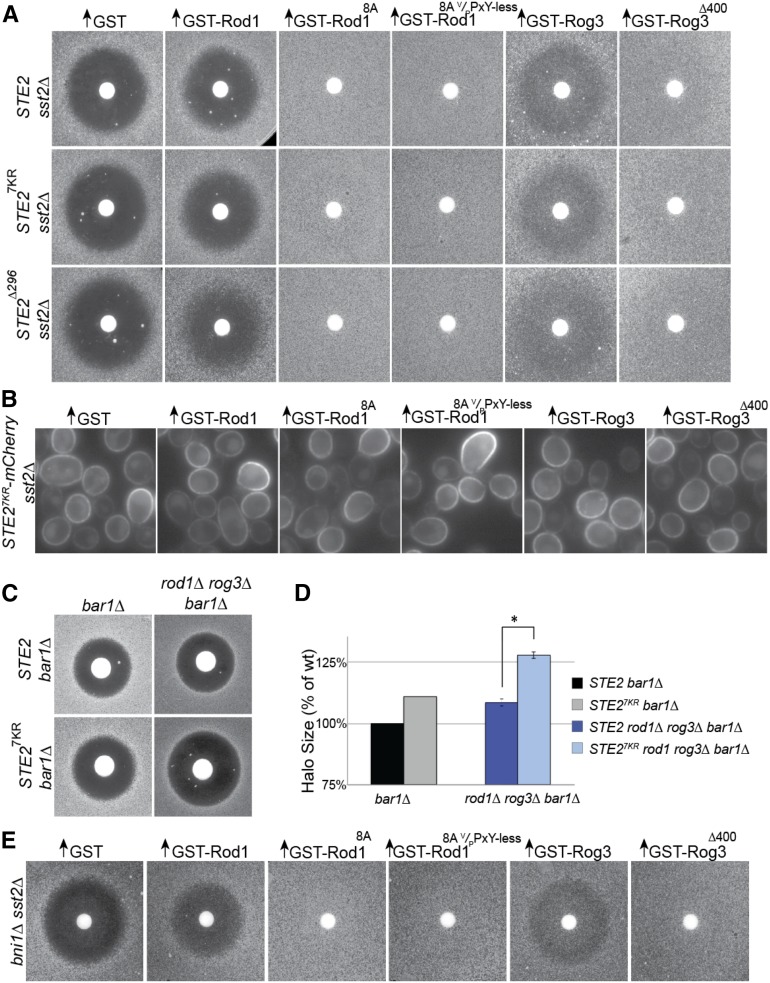Figure 5.
Hypophosphorylated Rod1 and Rog3 can stimulate adaptation independently of Ste2 ubiquitinylation. (A) The adaptation-promoting capacity of the indicated alleles of Rod1 and Rog3 was assessed, as in Figure 1A, in otherwise isogenic cells expressing either wild-type Ste2, Ste2(7K-toR) (Ste27KR), or Ste2(∆296-431) (Ste2∆296) as the sole source of this receptor. (B) Expression of the indicated GST-α-arrestins from the GAL promoter on URA3-marked 2-μm DNA vectors was induced with 20 µM β-estradiol for 3 hr in a ura3 derivative of a strain expressing Ste2(7K-to-R)-mCherry from the chromosomal STE2 locus and then examined by fluorescence microscopy. (C) Pheromone sensitivity of MATa bar1∆ cells, either containing or lacking endogenous Rod1 and Rog3 and expressing mCherry-tagged versions of either wild-type Ste2 or Ste2(7K-to-R), as indicated, was assessed on SC-Ura medium with sterile filter disks containing 600 ng α-factor and photographed after incubation for 2 days at 30°. (D) Quantification and statistical analysis of the change in halo diameter for independent trials (n = 6) of the comparative halo assays shown in C. Average halo diameter for control cells was set at 100%, and the other halo sizes of each mutant were normalized to the control. Error bars, ±SEM; *P < 0.001. (E) The adaptation-promoting capacity of the indicated alleles of Rod1 and Rog3 was assessed, as in Figure 1A, in MATa sst2∆ tester cells lacking the formin Bni1.

